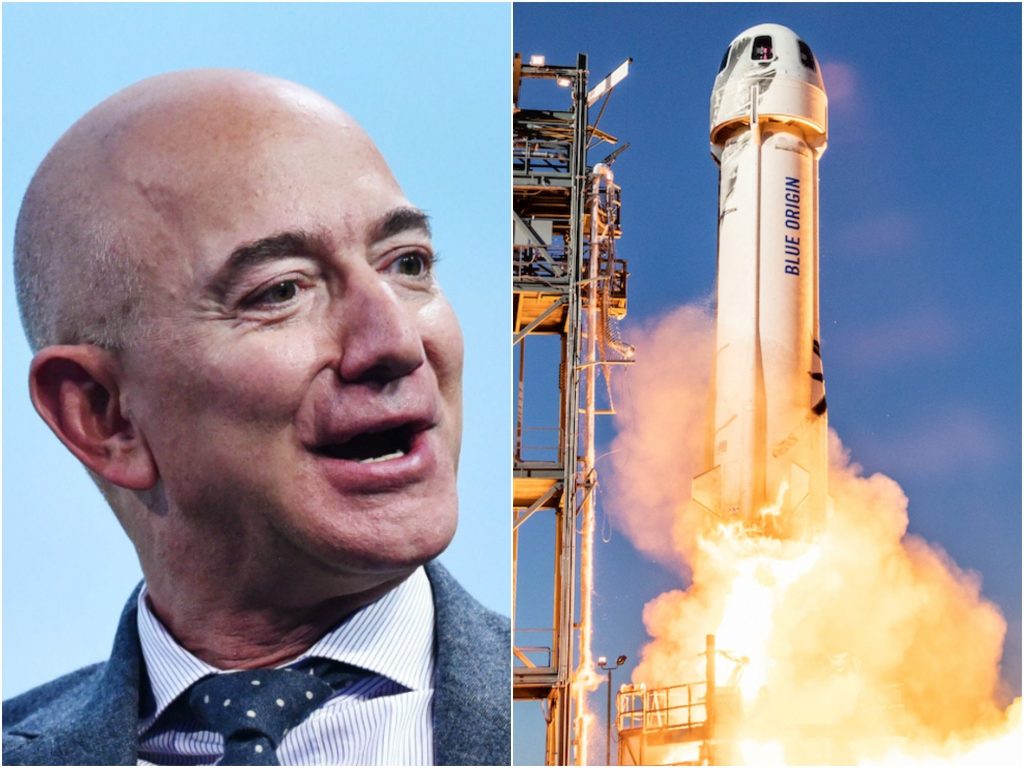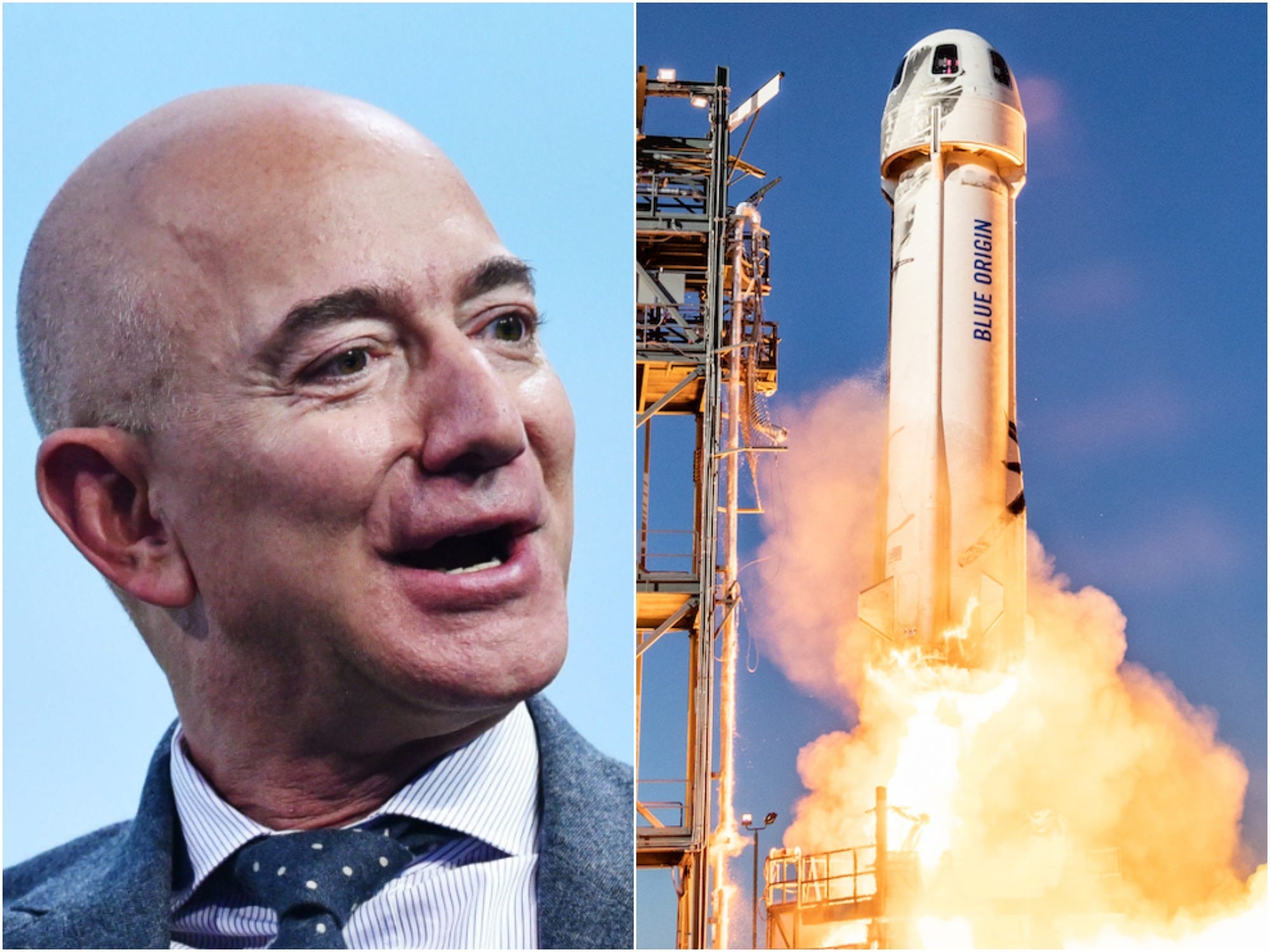
Mandel Ngan/AFP via Getty Images; Blue Origin
- Jeff Bezos is risking his life to prove that Blue Origin can safely fly humans to the edge of space.
- About 1% of US human spaceflights have resulted in a fatal accident.
- But the New Shepard rocket seems relatively safe, given its flight record and how short the trip is.
- See more stories on Insider's business page.
Jeff Bezos, his brother Mark, and two unnamed people – at least one of whom is a multimillionaire – are about to place their lives in the hands of Blue Origin's rocket engineers.
Bezos, who founded the company in 2000, announced on Monday that he and his brother would be the first passengers on its New Shepherd rocket, along with the highest bidder for the third seat. The as yet unnamed winner of that auction bid $28 million on Saturday to go on the trip. (The money will go to Blue Origin's foundation, Club for the Future.) A fourth person will join them as well.
The group will strap into a capsule on the top of the five-story rocket as early as July 20.
"Bezos is a risk-taker," John Logsdon, the founder of George Washington University's Space Policy Institute and a former member of the NASA Advisory Council, told Insider. "He certainly understands that there are risks involved, and probably has a good handle on how risky it is."
For the rest of us – who don't have access to Blue Origin's rocket design or risk calculations – it's difficult to say just how much risk Bezos is taking. The company did not respond to multiple requests for comment for this story. But a few key factors offer clues.
New Shepard has flown successfully before - 15 times - but never with humans onboard. The rocket has a good test-flight record, and it features an emergency system that can jettison the passenger capsule away from a failing rocket. Plus, the whole trip is only 11 minutes long.
At the same time, however, Bezos will fly with no pilot, and probably no spacesuit. And no matter how safe New Shepard is, spaceflight is always risky. About 1% of US human spaceflights have resulted in a fatal accident, according to an analysis published earlier this year.
"That's pretty high. It's about 10,000 times more dangerous than flying on a commercial airliner," George Nield, a co-author of that report, told Insider. Nield formerly served as the Federal Aviation Administration's associate administrator and led its Office of Commercial Space Transportation.
"In order to learn how to do this safer, more reliably, and more cost effectively, many people believe we need to keep gaining experience by having more and more of these flights," he added. "[Bezos] obviously has made the decision that having millions of people living and working in space is something that he strongly believes in, and he wants to do his part to help make that happen in some small way."
Skimming the very edge of space lowers the risk
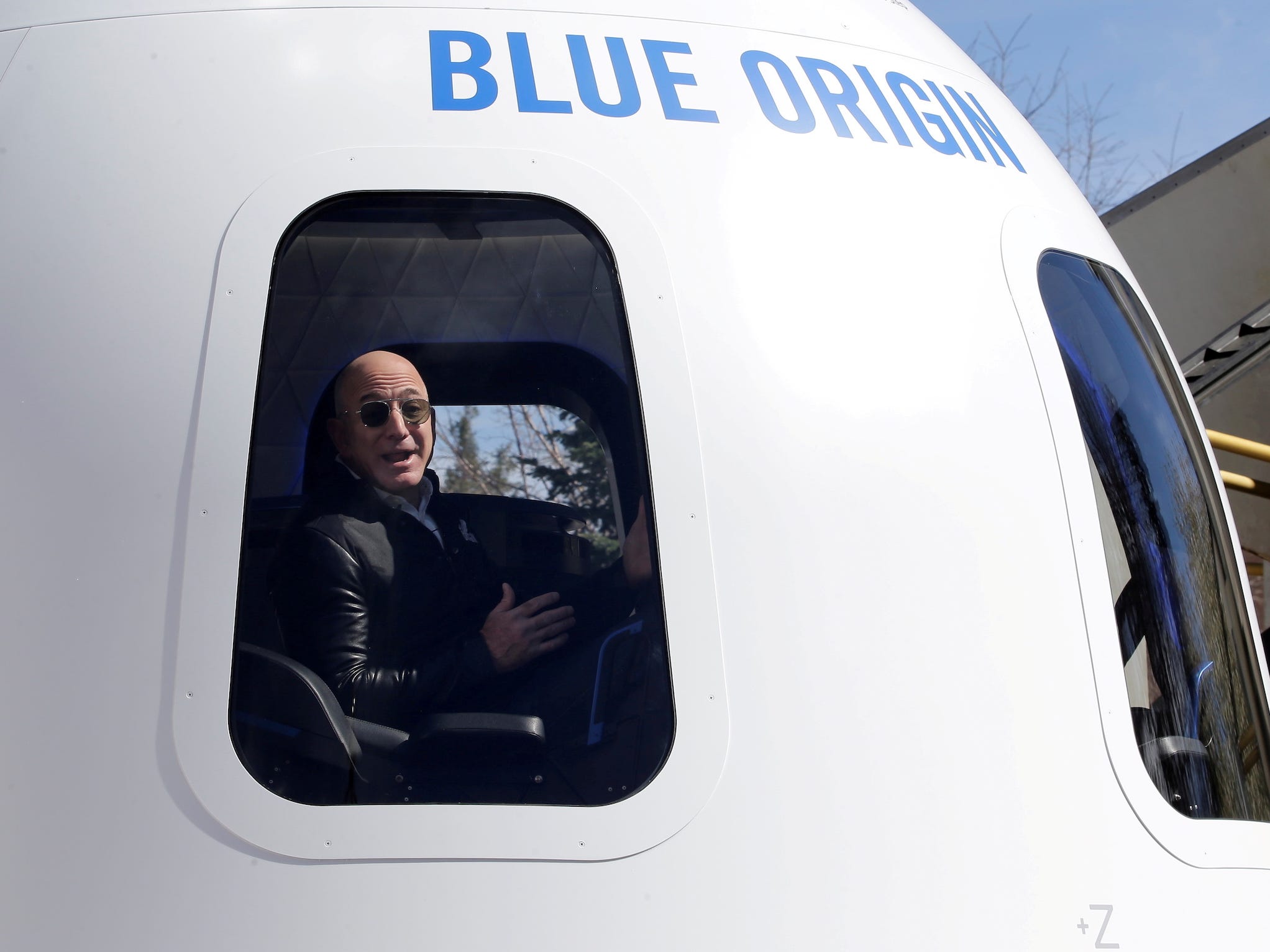
Isaiah J. Downing/Reuters
If all goes according to plan on the day of Bezos' flight, here's what it'll look like: The New Shepard rocket will fire its engines, spewing flame and smoke across the plains of West Texas. As it screams through the atmosphere, the force of the climb and the pull of Earth's gravity - which will feel three times stronger than normal - will pin the Bezos brothers and their guests into their seats.
After three minutes, the rocket should separate from the capsule and fall back to Earth. The passengers will feel weightless as they clear the boundary of space.
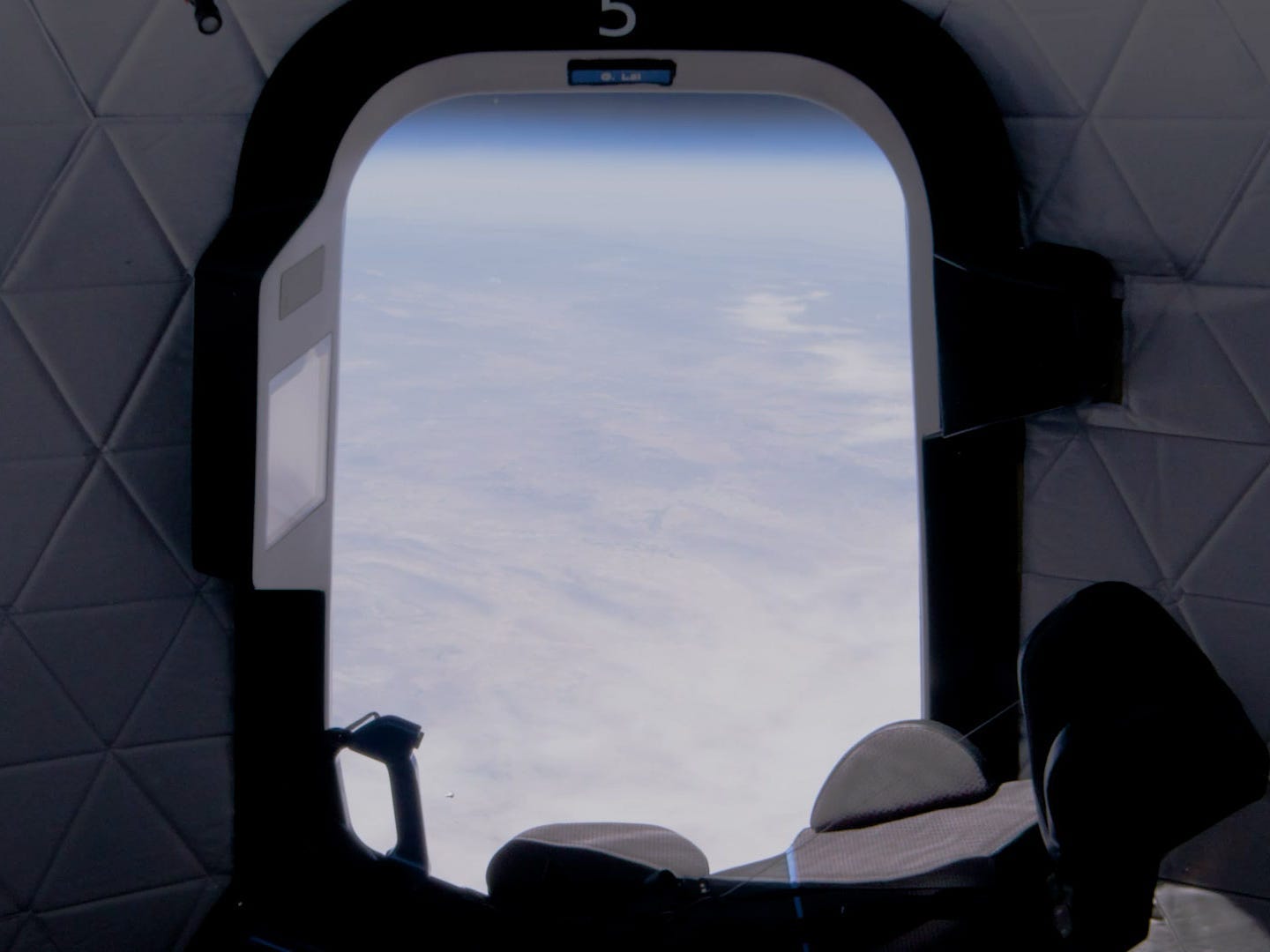
Blue Origin
Bezos and his companions will have just three minutes in space. During that time, they can unbuckle and float around the cabin, drifting from one window to another to savor the views of Earth on one side of the spaceship and the blackness of space on the other.
As gravity takes hold again and the spaceship begins to fall back to Earth, Bezos and his co-passengers will strap in for a high-speed plunge. They will likely feel a significant jerk as three parachutes balloon into the air to brake the spaceship's fall.
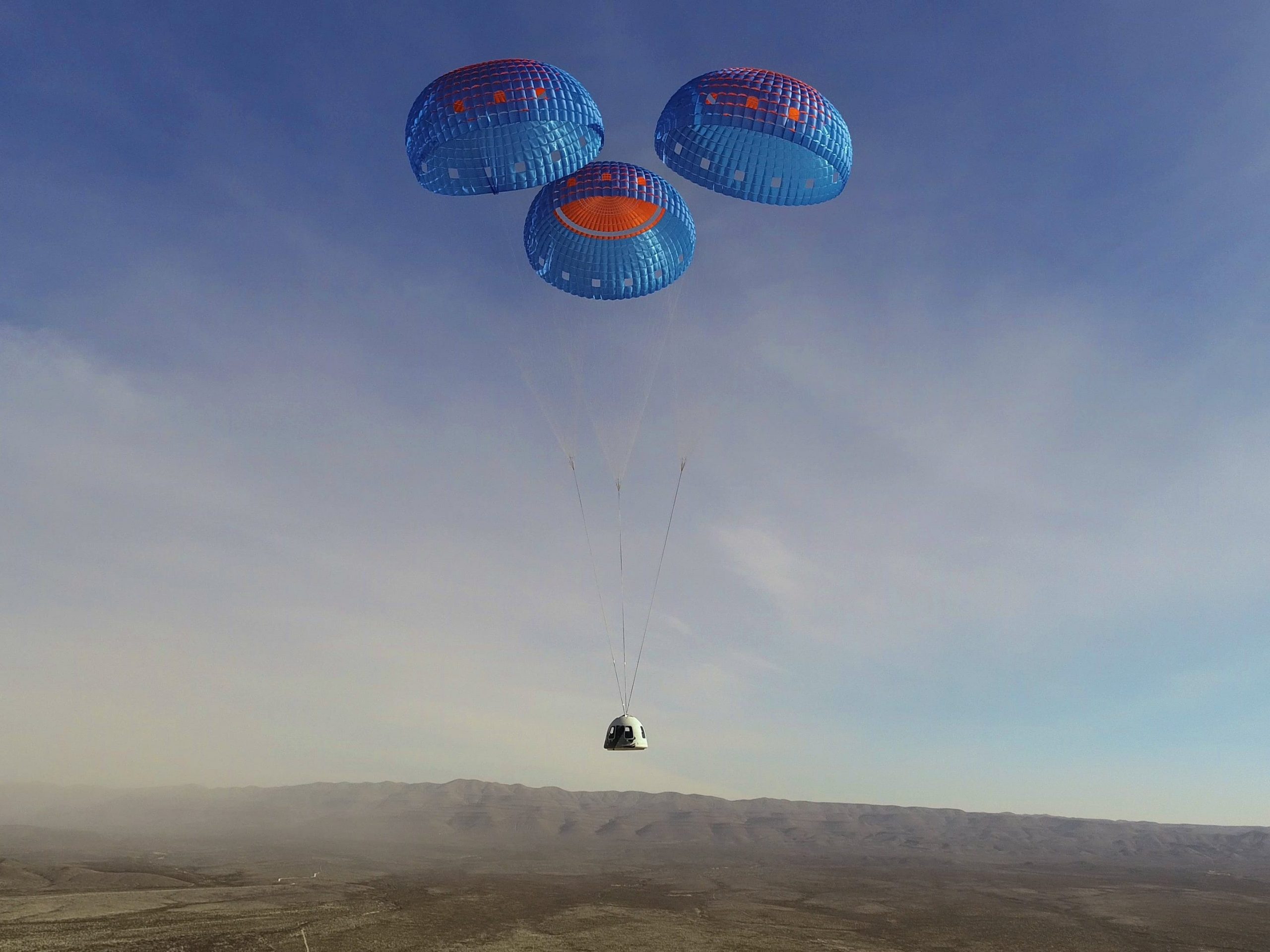
Blue Origin
The parachutes should carry the capsule to a gentle landing in the Texas desert, where a recovery crew will be waiting.
This type of flight is referred to as suborbital, since the capsule won't enter orbit around Earth. Blue Origin designed and built New Shepard specifically to carry high-paying customers to the edge of space. The rocket is too small, and its engines don't have enough thrust, to push itself into orbit.
But keeping the flight short and suborbital comes with pluses: There's less chance that something will go wrong, and the vehicle is easier to control because its engines are smaller and the rocket is traveling slower than would be needed to reach orbit.
If Bezos' flight goes well, the new launch system could look more attractive to future space tourists.
New Shepard is thoroughly tested and has an emergency-escape system
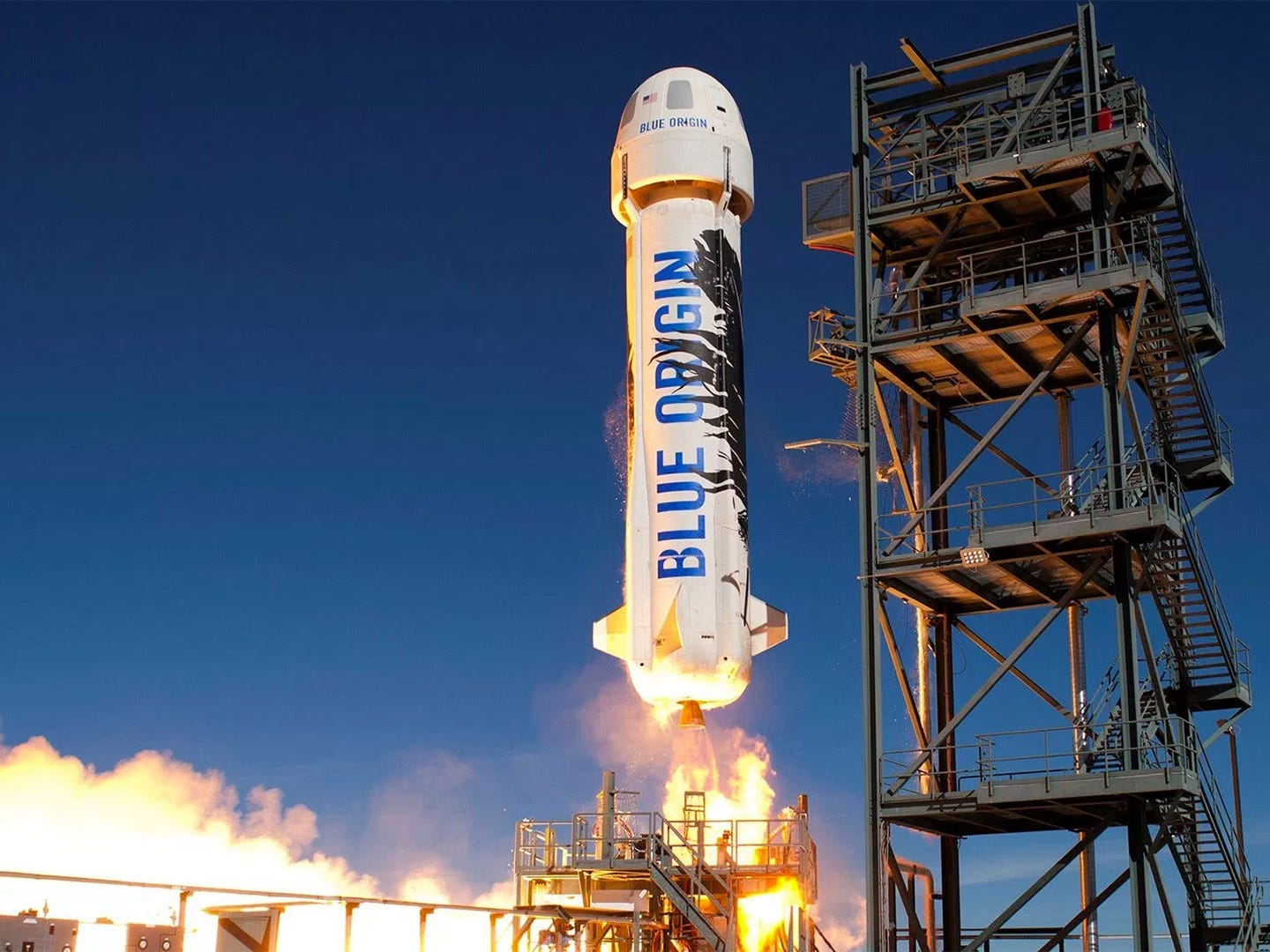
Blue Origin
The most nail-biting parts of this spaceflight will probably be when the engines burn for liftoff, when the rocket separates from the capsule, and when the parachutes deploy.
"You have a high-performance piece of machinery in the rocket engine that could break, come apart, do bad things," Logsdon said.
New Shepard has executed all these maneuvers many times before - just not with people on board. It's flown 15 times since 2015, with three successful tests of its emergency-escape system, which would jettison the capsule away from a failing rocket.
If a parachute fails to deploy, the capsule is designed to give more thrust to its downward-facing engines to help it land safely. If two chutes fail, a crushable "bumper" section on the bottom of the capsule should absorb the impact of landing.
"The capsule is the most highly redundant and safe spaceflight system, we think, that has ever been designed or flown," Gary Lai, senior director of New Shepard's design, said in a Blue Origin video about safety, posted online in April. "In most cases, you have a backup to the backup system."
Logsdon described the New Shepard testing process as "very thorough" and "slow-paced." He pointed out that the Space Shuttle's very first flight had humans on board.
"Compared to the Space Shuttle Program, this is a far less risky undertaking," Logsdon said.
Flying without spacesuits could add risk, but it may be safer if someone vomits
Ever since the Challenger disaster in 1986 - when the Space Shuttle broke apart during launch, killing all seven crew members - all NASA astronauts have worn pressurized spacesuits for launch and landing.
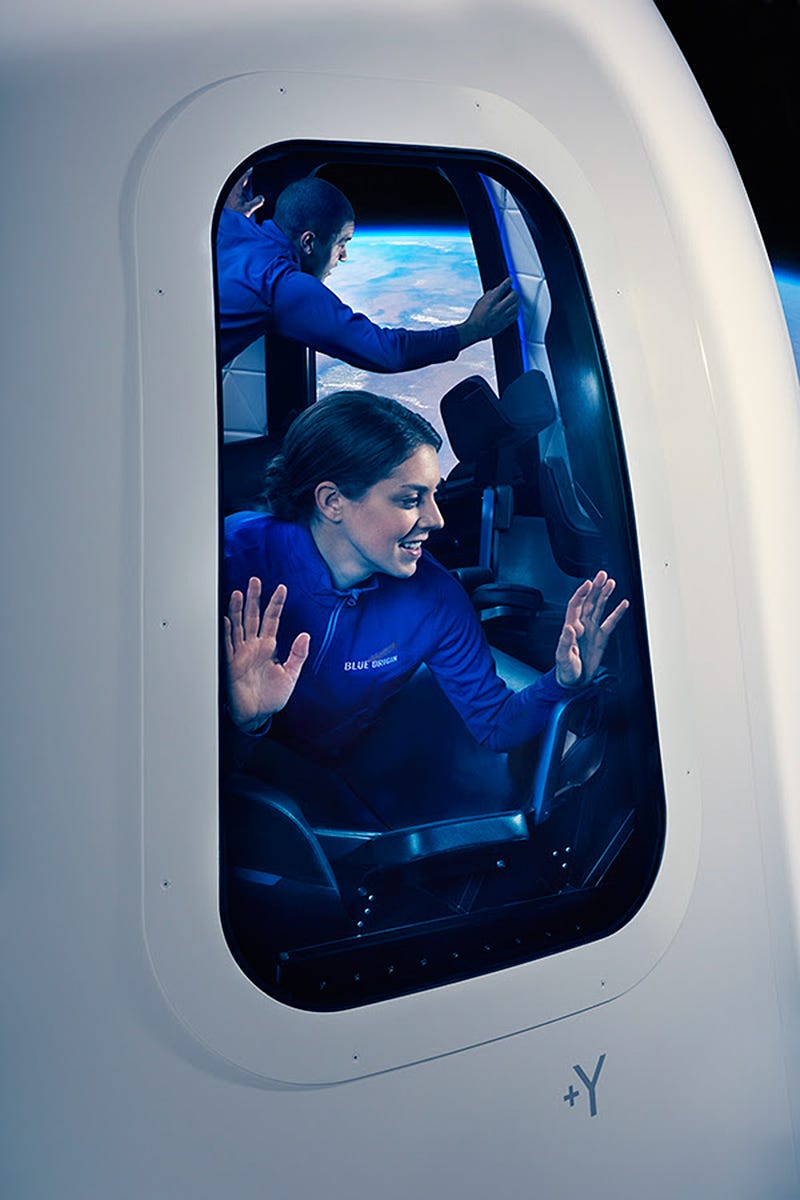
Blue Origin
Spacesuits would not have saved those aboard Challenger, but they could save lives if a space capsule experiences a cabin leak yet remains intact.
Blue Origin's website, however, indicates that New Shepard passengers will wear only a jumpsuit - not a pressurized spacesuit and helmet. According to CNN, there are oxygen masks in the capsule, much like on an airplane, in case the cabin becomes depressurized. The company hasn't specified what Bezos or his companions will wear, however.
Both Nield and Logsdon said the chance of a cabin leak is very small. So the decision to wear a spacesuit or not depends mostly on the design of the capsule. If it has especially thick skin and strong windows, and if its systems can accommodate hiccups and technical errors without endangering the passengers, then flying without a spacesuit could be safe.
When it comes to flying tourists, it may even be better to skip the spacesuit, since first-time fliers often throw up during launch or landing.
"Especially if you are not a trained and experienced astronaut, wearing a spacesuit could be riskier if you got sick," Nield said.
If you weren't sufficiently trained to operate the spacesuit, you could choke on your own vomit.
A fully automated flight with no pilots isn't necessarily a safety issue
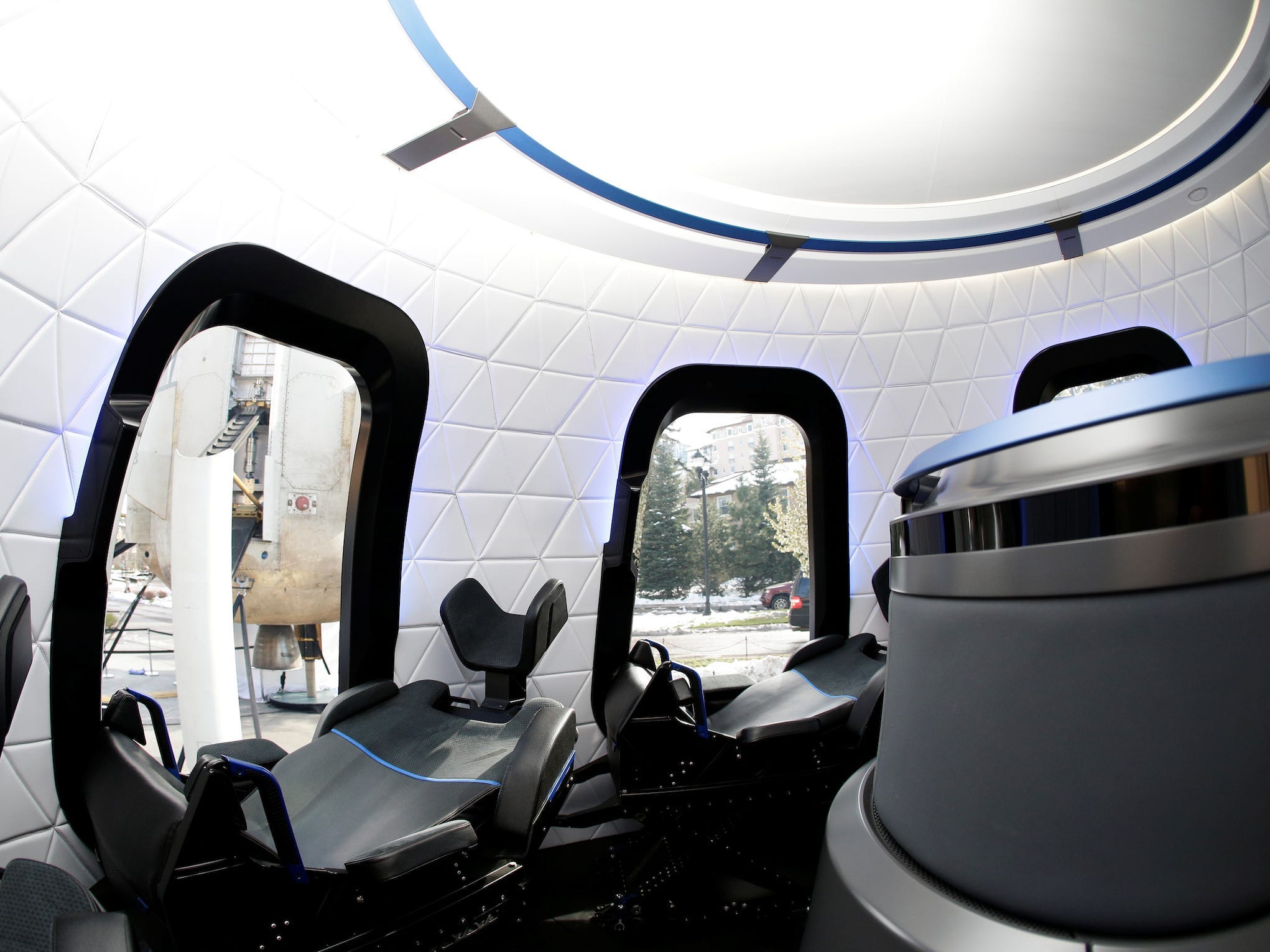
Isaiah J. Downing/Reuters
New Shepard conducts its flights autonomously.
"Its design does not allow anybody to do much flying," Logsdon said.
That's not necessarily more risky than a rocket that requires a pilot, as long as the passengers are properly trained on what to do in an emergency.
Still, this fully automated launch system is relatively new, and lots of things can go wrong during early flights. Rocket failures can often be traced back to small errors across all kinds of hardware and software. It is rocket science, after all.
"Until we get lots of experience, like we've had with millions of airplane flights over the years, then there's going to be some learning involved. And we're going to get some surprises along the way. And there's going to be some more accidents or incidents in future years," Nield said. "With cars and boats and planes and trains, people die every year. And spaceflight is not going to be any different when it comes to that."

